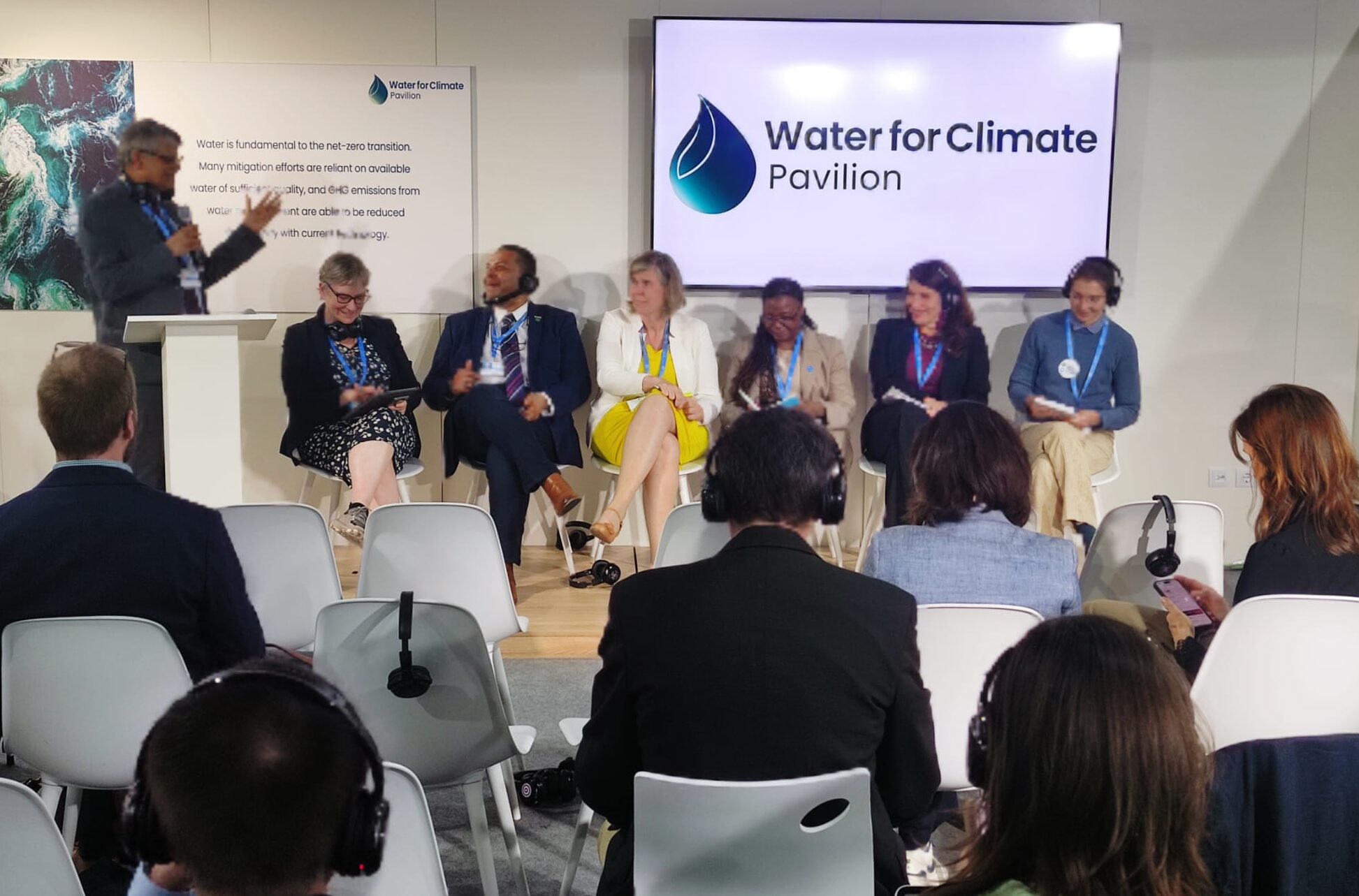
On Food, Water, and Agriculture Day at COP29, the spotlight at the Water for Climate Pavilion was on “Locally Led Adaptation and Systems Strengthening,” a theme that underscored the urgent need to shift climate action from high-level discussions to community-driven solutions.
Throughout the day, experts shared insights on how local actions, often underfunded and overlooked, are vital for tackling the climate crisis.
Here are three key takeaways from the conversation.
Panelists noted that in 2023 alone, over 80% of major climate crises—floods, droughts, and storms—occurred at the sub-national level, leaving local governments and communities to respond with limited resources. This underscores the importance of viewing local action not as a downstream response to global strategies but as the primary driver of climate resilience.
Panelists highlighted that local solutions often succeed where top-down policies fail, thanks to their adaptability and relevance to community needs. Local action should not just complement global efforts but define them, ensuring adaptation efforts reach the people most affected.
“Local climate action is all climate action, in my opinion. The way I see our work here at COP is we meet each other, we learn, we share solutions, we share knowledge, and then we bring that back to our local communities and utilize them. We share the knowledge and we take action locally,” said Shreya Ramachandran, youth activist and founder of the Grey Water Project.
“Whether you’re a village or a major city, the impacts are profound. We need to be looking at how we deal with this water crisis at a local level,” said Kate Strachan, Senior Manager at ICLEI Africa.
While investments in infrastructure often dominate climate funding, they are only part of the equation. Experts at the Water for Climate Pavilion pointed out that infrastructure alone cannot withstand the growing volatility of climate impacts without equally robust investments in people and systems. Strengthening governance structures, building capacity within local institutions, and empowering communities – including young leaders – to take charge of their climate futures are critical steps toward sustainable adaptation.
“Getting politicians and donors to invest in people is really hard, but it’s what we need if we’re going to have sustainable investment in infrastructure,” said Karlene Maywald, South Australian Water Ambassador.
“We need capacity building. A lot of us still don’t have access to trainings that will allow us to be part of this sector. Mentorship. How come young water professionals have such trouble finding entry level positions that are paid – at least enough to have rights to a decent [standard of] living?” said Marta Zaragoza Navarro at the Global Youth Movement for Water.
“If you are in a position where you have the availability to invite young people into your space as a co-decisionmaker, be the person to go out on a limb and make that happen. I think something that trips a lot of decision-makers up is that they have to raise their voices and create a space that wasn’t always there,” said Shreya Ramachandran, Founder of the Grey Water Project.
The panelists argued that NAPs should evolve into actionable national investment plans that align closely with a country’s broader development priorities. This transformation requires a shift from fragmented project-based approaches to integrated, cross-sectoral planning. By focusing on systemic change rather than project delivery, NAPs can become tools for sustainable adaptation that put citizens at the center.
“National Adaptation Plan is a completely misleading name. They aren’t planning instruments, they are shopping lists for donors…What has changed though is that we’ve seen an explosion…Everybody else has noticed the NAPs, that they have started to reform in a new way to signal that this is a project that is in alignment with national priorities and goals,” – John Matthews, Executive Director, AGWA
“Some countries have started to turn NAPs into national investment plans. Instead of developing a NAP as a shopping list, they go through screening their sectors and define with multi-stakeholder consultation the key priorities and put it in a more investable way,” said Dr Amgad ELmahdi, Regional Manager, Middle East and North Africa (MENA), Green Climate Fund.
“I’m a little bit scared when we say that these NAPs are lists of investment projects and then we go and look for external financiers. Water management and climate adaptation, and the role of government, is so much more than a list of projects…Let’s go back to the basic role of national governments which is to take care of the well-being of their citizens. It’s making choices in scarcity whether it’s water scarcity or financial scarcity.” – Meike van Ginneken, Water Envoy for the Kingdom of the Netherlands